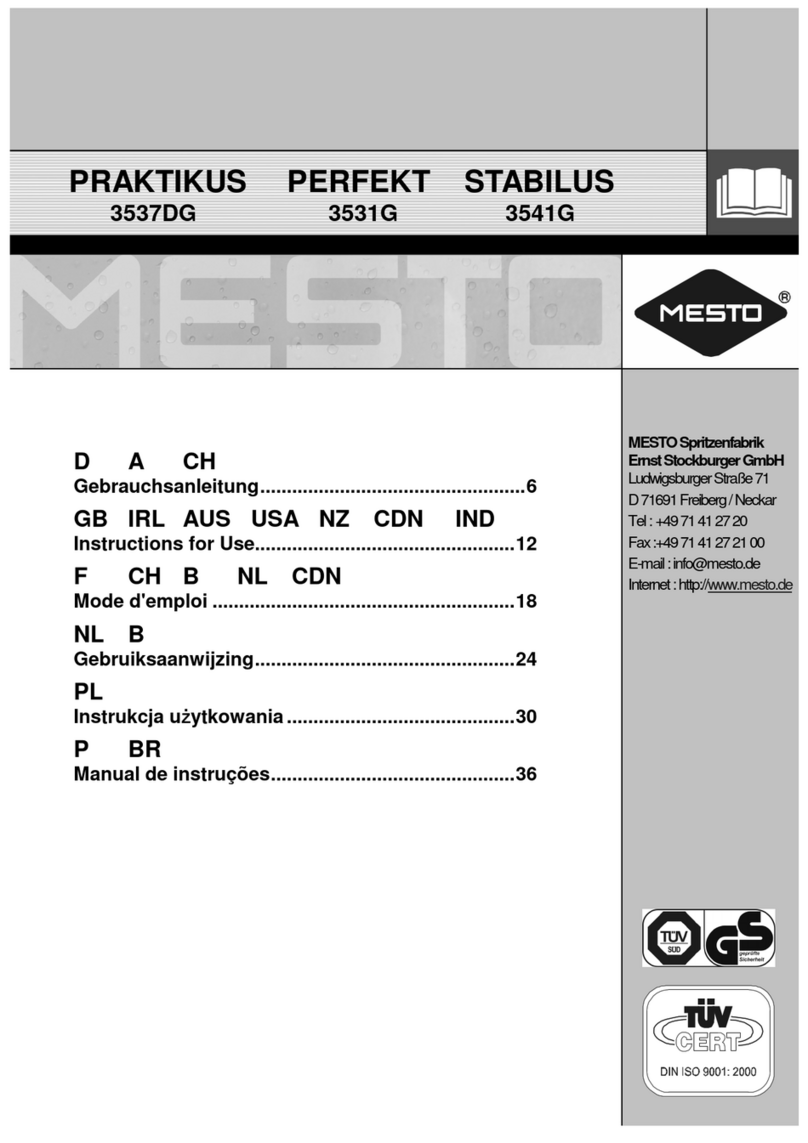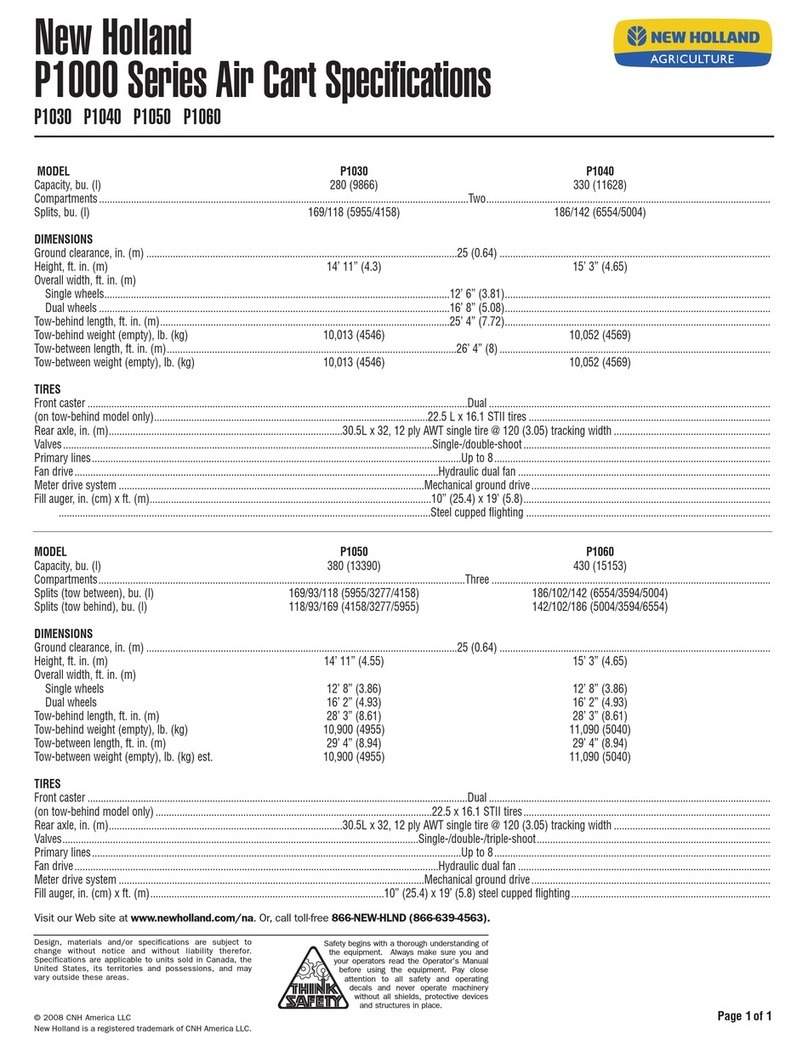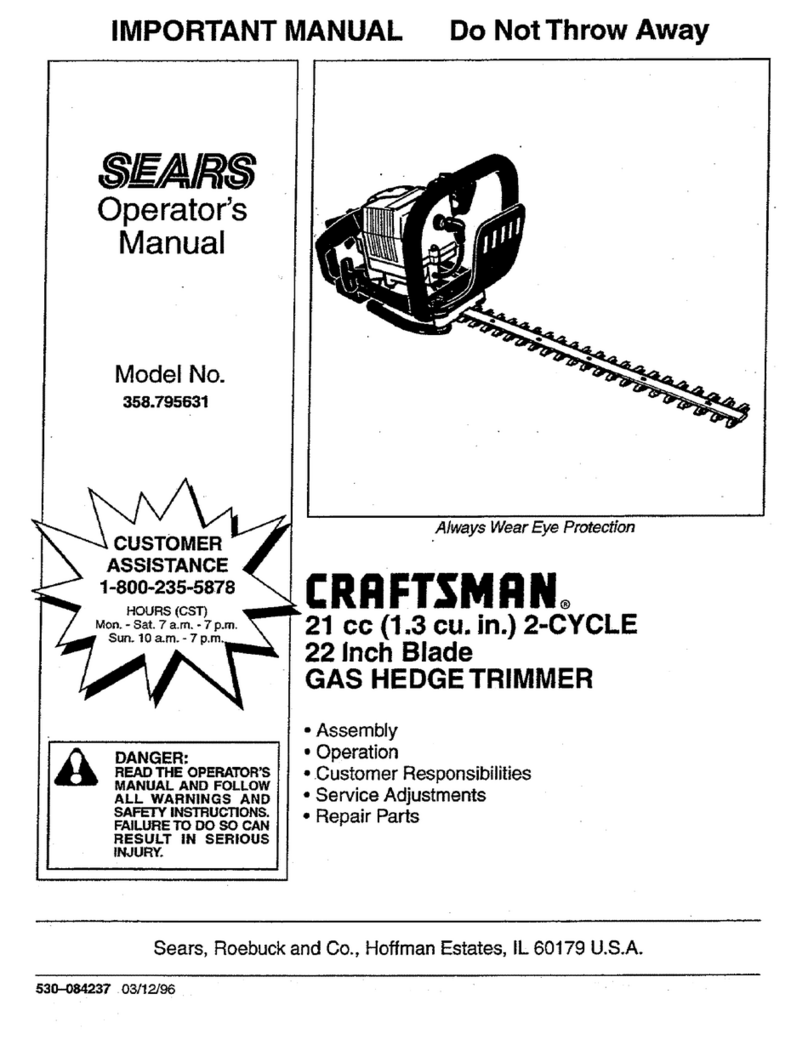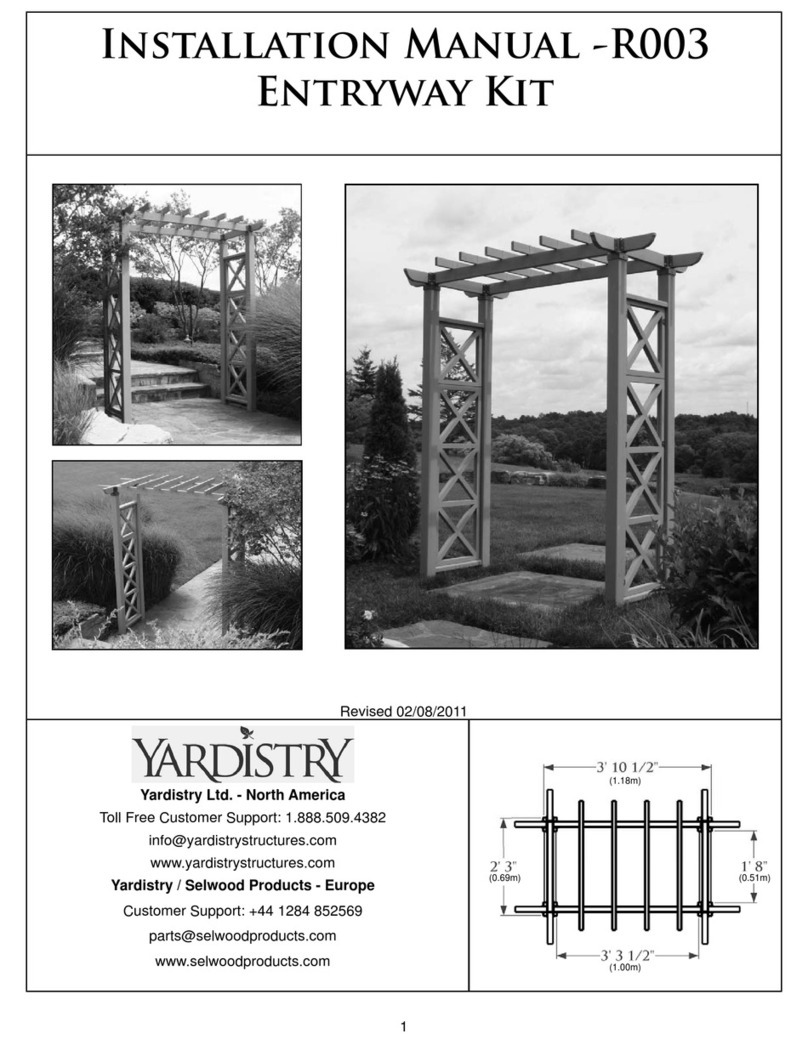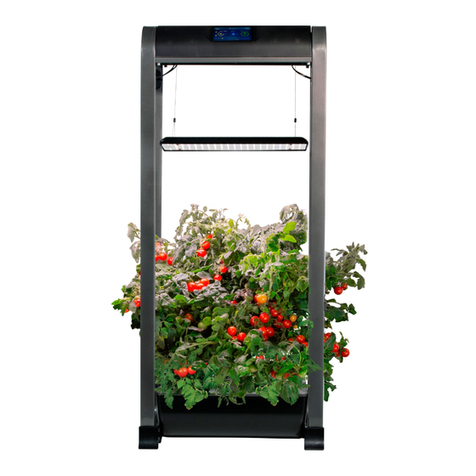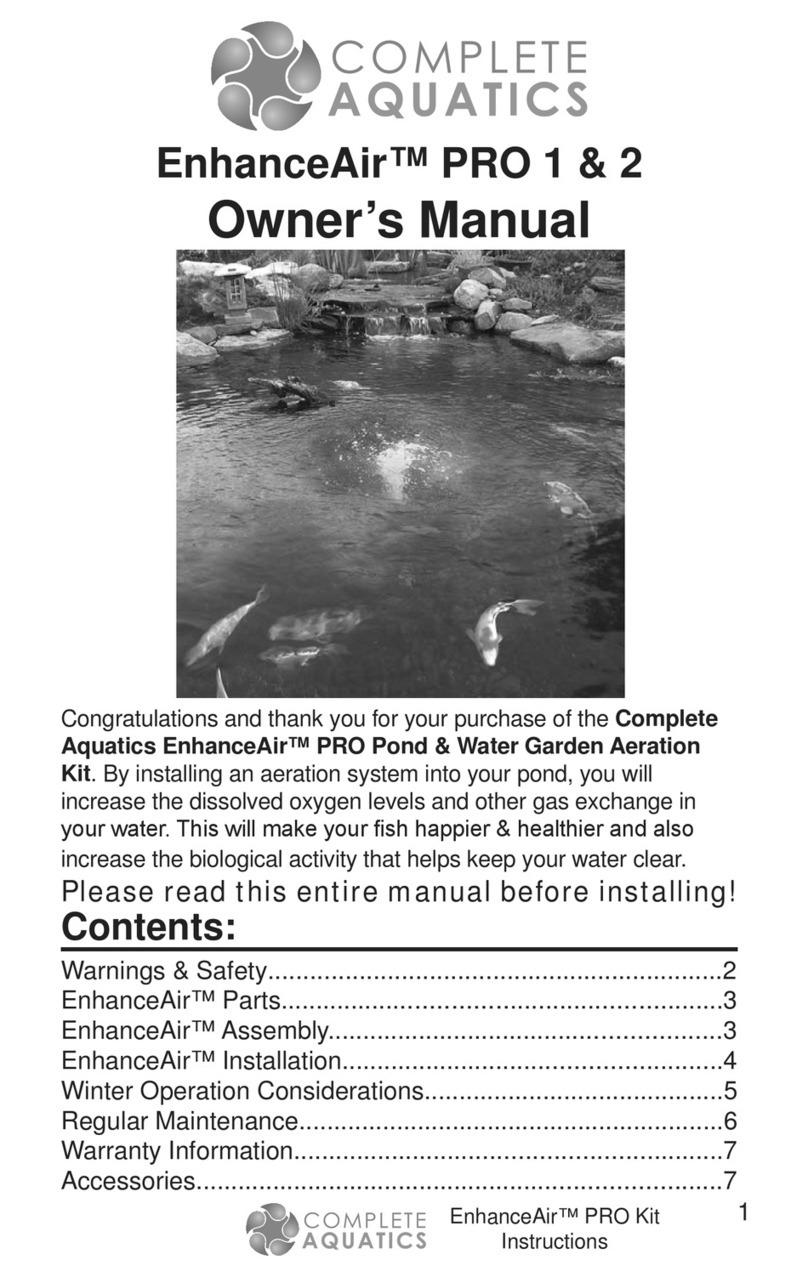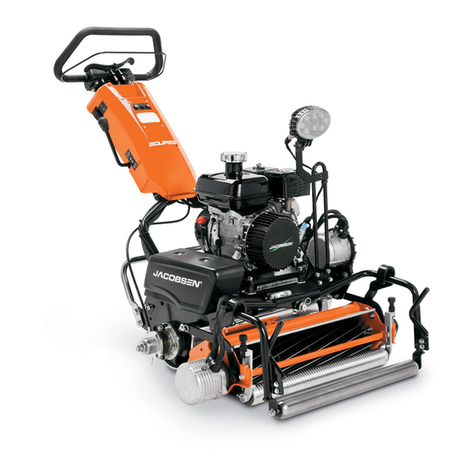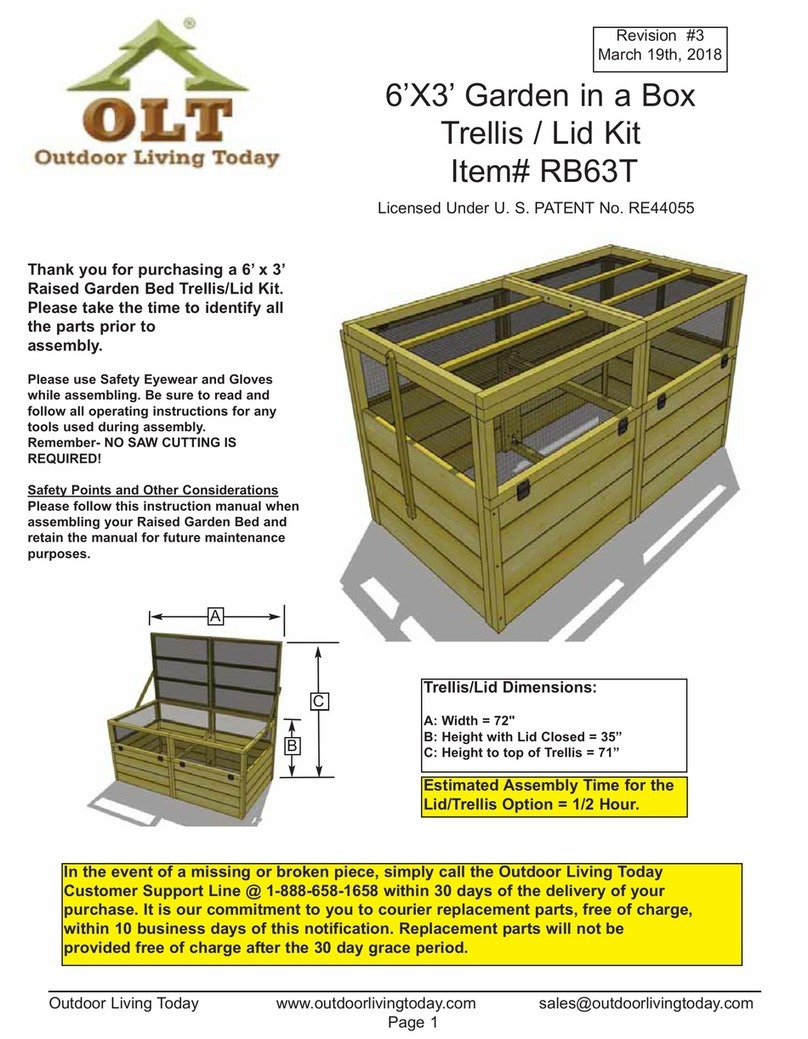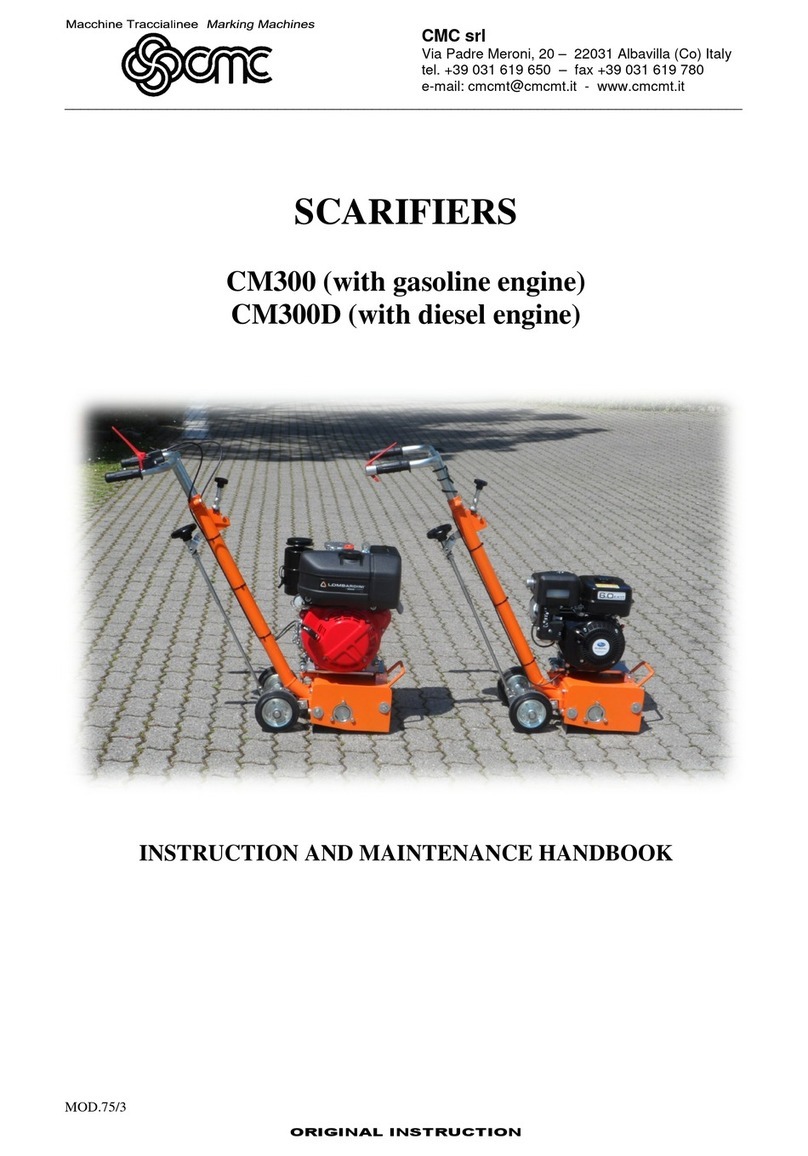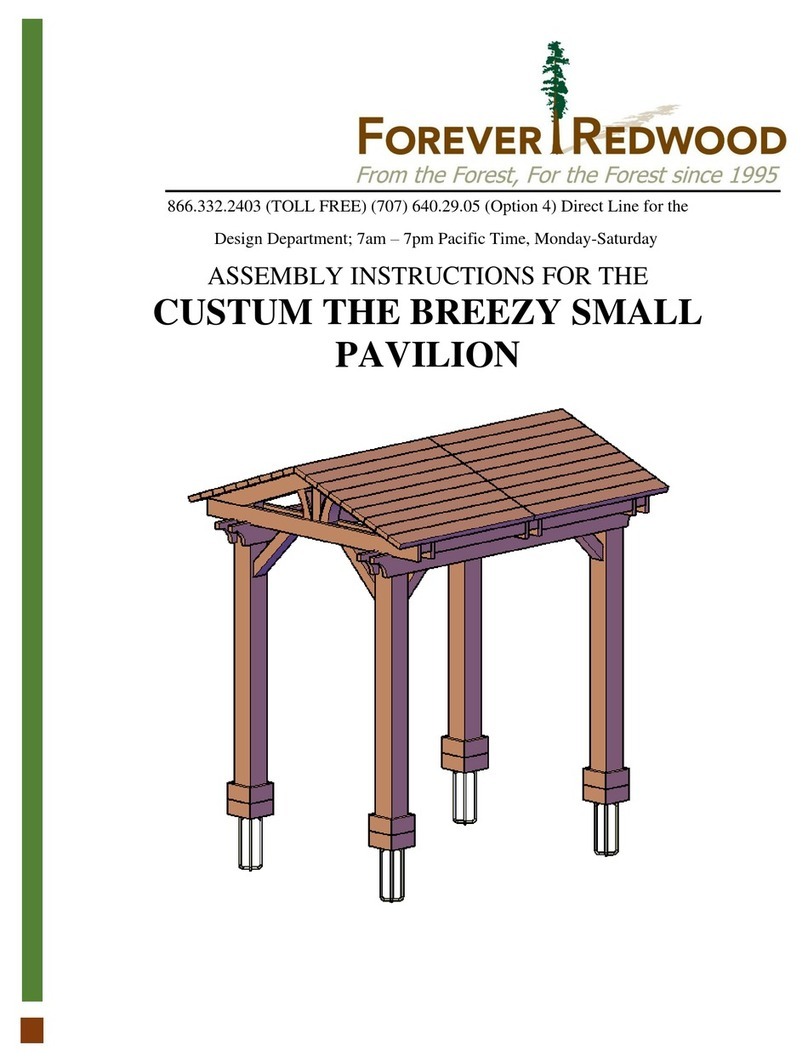Mesto PROFI 3275 User manual

PROFI
32
75, 3270
MESTOSpritzenfabrik
ErnstStockburgerGmbH
LudwigsburgerStraße71
D71691Freiberg/Neckar
Tel: +4971412720
Fax:+497141272100
E-mail:info@mesto.de
Internet:http://www.mesto.de
D A CH
Gebrauchsanleitung.............................................6
GB IRL AUS USA NZ CDN IND
Instructions for Use ...........................................12
F CH B NL CDN
Mode d'emploi ....................................................18
NL B
Gebruiksaanwijzing ...........................................24
E MEX
Instrucciones de uso .........................................30
I CH
Istruzioni per l'uso .............................................36
P BR
Manual de instruções ........................................42

2
Ersatzteile Spare Parts Pièces de Rechange
Varaosat Reserve-onderdelen Varuosade
Pezzi di ricambio Reservdelar Reservedele
PROFI 3275, 3270

3
1
2
3
4
5
6
7
8
9
6
5
10
8
3
9
11
1
2
2
10
7
1 3
2
7
5
6
4

4
10
11
12
13
14
15
16
17
18
8
6
2
5
1
2
1
2
14
1
2
13
10
1
3
10
2
1
5

5
19
20
21
22
18
20
19
16
16
8
1
7
5
6

6
D A CH
Herzlichen Glückwunsch
zu Ihrem neuen MESTO-Sprühgerät und Danke für das Vertrauen in unsere Marke.
Ihre Zufriedenheit mit den Produkten und dem Service von MESTO ist uns sehr wichtig.
Wir bitten um eine Rückmeldung, sollten Ihre Erwartungen nicht erfüllt sein.
Unsere Adresse finden Sie auf der Titelseite dieser Gebrauchsanleitung.
Lesen Sie die Gebrauchsanleitung vor der Verwendung des Gerätes!
Bewahren Sie die Gebrauchsanleitung gut auf.
Verwendung
Drucksprühgeräte PROFI 3275 und 3270 sind für das Sprühen von Pflanzenschutzmitteln,
einschließlich Unkrautvertilgern in vorgeschriebenen Konzentrationen vorgesehen. Beachten Sie
bei jeder Anwendung die Hinweise der Mittelhersteller. Die Sprühgeräte dürfen ausschließlich im
Außenbereich oder gut durchlüfteten Räumen verwendet werden.
Zum Zeitpunkt der Herstellung sind keine schädlichen Einwirkungen auf das Gerät der von
der Julius Kühn-Institut (JKI) zugelassenen Pflanzenschutzmitteln bekannt.
Unsachgemäße Verwendung kann zu gefährlichen Verletzungen und
Umweltschäden führen.
Verwenden Sie andere Mittel nur, wenn schädliche Einwirkungen auf das Gerät und die
Gefährdung von Menschen und Umwelt ausgeschlossen sind. Auf Anfrage bekommen Sie
von uns eine Liste der im Sprühgerät verwendeten Werkstoffe.
Nicht geeignet für
• entzündliche Flüssigkeiten mit einem Flammpunkt unter 55 °C
• ätzende Stoffe (bestimmte Desinfektions- und Imprägniermittel, Säuren, Laugen)
• Flüssigkeiten mit Temperaturen über 40 °C
• Lösungsmittel und lösungsmittelhaltige Flüssigkeiten
• zähe, klebrige oder Rückstand bildende Flüssigkeiten (Farben, Fette)
• den Einsatz im Lebensmittelbereich.
Unter keinen Umständen verwenden
• fremde Druckquellen ohne MESTO - Druckluftfüllventil
• zur Abflammung
• zur Lagerung und Aufbewahrung von Flüssigkeiten
• als Augendusche.
Sicherheit
Kinder und Jugendliche ohne sachkundige
Einweisung dürfen das Gerät nicht
benutzen.
Bewahren Sie Sprühgeräte kindersicher auf.
Treffen Sie Vorsorge gegen Missbrauch bei Benutzung gefährlicher Mittel.
Sprühen Sie niemals auf Menschen, Tiere, elektrische Geräte und Leitungen,
gegen den Wind oder in Gewässer.
Reparaturen oder Veränderungen am Behälter sind nicht zulässig.
Das Sicherheitsventil darf nicht unwirksam gemacht werden.

7
D A CH
Vermeiden Sie Zündquellen in der Umgebung, wenn Sie brennbare Flüssigkeiten
zerstäuben.
Lassen Sie das
Gerät nicht unter Druck und/oder in der Sonne stehen. Stellen Sie
sicher, dass das Gerät nicht über die maximale Betriebstemperatur erwärmt wird.
(→Tabelle 1). Schützen Sie das Gerät vor Frost.
Blasen Sie Düsen oder Ventile niemals mit dem Mund durch.
Verwenden Sie nur Ersatz- und Zubehörteile von MESTO.
Für Schäden durch Verwendung von Fremdteilen übernehmen wir keine Haftung.
Tragen Sie beim Umgang mit gefährlichen Stoffen geeignete Schutzausrüstung.
Beobachten Sie beim Pumpen stets Kolbenma
nometer um den max. Sprühdruck
(→Tabelle 1 unten) nicht zu überschreiten.
Vor Befüllen, nach Gebrauch und vor Wartungsarbeiten den Restdruck im Behäl
ter
vollständig abbauen (→Kapitel „Nach Gebrauch“, Punkt 1).
Lieferumfang
Behälter [1] mit Pumpe [2], Schlauch [3], Gebrauchsanleitung [4], Spritzrohr [5],
Abstellventil [6], Tragriemen [7]. (Abb. 1)
Sie finden die im Text genannten Abbildungen in den vorderen aufklappbaren
Seiten 3 – 5 dieser Gebrauchsanleitung.
Technische Daten
Gerätetyp PROFI 3275 PROFI 3270
Max. Einfüllmenge 5 l 10 l
Gesamtinhalt 8 l 12,5 l
Max. Sprühdruck 3 bar
Max. Betriebstemperatur 40 °C
Leergewicht 1,8 kg 2,8 kg
Behälterwerkstoff Polyethylen
Trageweise seitlich
Technische Restmenge < 0,07 l
Max. Volumenstrom 1 l/min
Rückstoßkraft < 5 N
Druckwechsel von 0 bis 3 bar min. 5000 x
Tabelle 1

8
D A CH
Zusammenbauen
1. Befestigen Sie den Tragriemen [7] am Behälter [1]. (Abb. 2)
2. Stecken Sie den Schlauch [3] in die Aufnahme [9] und sichern ihn mit der
Überwurfmutter. (Abb. 4)
3. Schieben Sie den Schlauch [3] auf das Abstellventil [6] und sichern ihn mit der
Überwurfmutter. (Abb. 4)
4. Schrauben Sie das Spritzrohr [5] auf das Abstellventil [6] (Abb. 4)
Prüfen
Sichtkontrolle:Sind Behälter [1], Pumpe [2], Schlauch [3], Abstellventil [6],
Kolbenmanometer [8] und Spritzrohr mit Düse [5] unbeschädigt? (Abb. 1, 3 und 4)
Achten Sie besonders auf die Verbindungen zwischen Behälter - Schlauch und
Schlauch – Abstellventil, sowie den Zustand von Pumpengewinde und Spritzrohr.
Dichtheit: Pumpen Sie das leere Gerät auf 2 bar auf (Abb. 10).
►Druck darf innerhalb von 30 min. nicht mehr als 0,5 bar abfallen.
Funktion: Ziehen Sie den Kolbenmanometer [8] hoch. (Abb. 3)
►Druck muss entweichen.
Betätigen Sie das Abstellventil [6]. (Abb. 12)
►Abstellventil muss öffnen und schließen.
Lassen Sie b
eschädigte oder nicht funktionsfähige Teile sofort durch unseren
Service oder von uns autorisierte Servicepartner ersetzen.
Vorbereiten
Beachten Sie die Hinweise im Kapitel „Sicherheit“.
1. Ziehen Sie den roten Knopf des Kolbenmanometers [8] so lange hoch, bis der Behälter
drucklos ist. (Abb. 3)
2. Drücken Sie die Kolbenstange mit Griff [10] nach unten und drehen sie gegen den
Uhrzeigersinn.
►Kolbenstange mit Griff ist verriegelt. (Abb. 5)
3. Schrauben Sie die Pumpe [2] aus dem Behälter. (Abb. 6)
Empfehlung zum Mischen der Sprühflüssigkeit im Gerät oder zum Vormischen in einem
externen Behälter: Füllen Sie 1/3 Wasser ein, dann geben Sie das Sprühmittel hinzu
und füllen den Rest mit Wasser auf.
4. Füllen Sie die Sprühflüssigkeit in den Behälter [1]. (Abb. 7)
5. Kontrollieren Sie die Füllhöhe mit Hilfe der Skalierung [11] am Behälter. (Abb. 7)
6. Schrauben Sie die Pumpe [2] in den Behälter. (Abb. 8)
7. Drücken Sie die Kolbenstange mit Griff [10] nach unten und drehen sie im
Uhrzeigersinn.
►Kolbenstange mit Griff ist entriegelt. (Abb. 9)
8. Erzeugen Sie den gewünschten Druck (→Tabelle 2) im Behälter (Abb. 10).
Max. Druck sollte 3 bar nicht überschreiten (roter Strich am Kolbenmanometer,
Abb. 10). Wird der max. Druck überschritten, spricht das Sicherheitsventil an und lässt
den Überdruck ab.
9. Drücken Sie die Kolbenstange mit Griff [10] nach unten und drehen sie gegen den
Uhrzeigersinn. (Abb. 5)
►Kolbenstange mit Griff ist verriegelt.

9
D A CH
Sprühen
Beachten Sie die Hinweise im Kapitel „Sicherheit“.
Betreiben Sie das Gerät nur senkrecht bzw. steil aufrecht hängend.
Vermeiden Sie die Abdrift von Sprühtröpfchen auf nicht zu behandelnde Flächen.
Achten Sie auf die Vorschriften des Mittelherstellers!
1. Hängen Sie das Gerät über die Schulter. (Abb. 11)
Um das Nachtropfen zu vermeiden, halten Sie beim ersten Sprühen das Spritzrohr
nach oben und betätigen das Abstellventil so lange bis aus der Düse keine mit Luft
vermischte Flüssigkeit mehr austritt.
2. Betätigen Sie das Abstellventil [6]. (Abb. 12)
►Die Sprühung beginnt.
3. Achten Sie auf den optimalen Sprühdruck (→Tabelle 2) am Kolbenmanometer [8]
(Abb. 10).
Tabelle 2. Abhängigkeit: Sprühmenge – Sprühdruck
4. Fällt der Sprühdruck mehr als 0,5 bar vom Optimum ab, pumpen Sie nach.
Wenn aus der Düse mit Luft vermischte Flüssigkeit austritt, ist der Behälter leer.
Nach Gebrauch
Beachten Sie die Hinweise im Kapitel „Sicherheit“.
1. Ziehen Sie den roten Knopf des Kolbenmanometers [8] so lange hoch, bis der Behälter
drucklos ist. (Abb. 3)
2. Verriegeln Sie die Kolbenstange mit Griff [10]. (Abb. 5)
3. Schrauben Sie die Pumpe [2] aus dem Behälter. (Abb. 6)
4. Verdünnen Sie die Restmenge zweimal hintereinander mit je 1/2 Liter Wasser und
sprühen Sie diese Flüssigkeit auf die behandelte Fläche.
Sammeln und entsorgen Sie die Restmenge nach geltenden Gesetzen,
Vorschriften und Regeln. Achten Sie auf die Vorschriften des Mittelherstellers!
5. Wischen Sie es mit einem feuchten Tuch ab.
6. Zum Austrocknen und Lagern bewahren Sie Behälter [1] und Pumpe [2] getrennt in
trockener, vor Sonnenstrahlen geschützter und frostfreier Umgebung auf (Abb. 13).
Reinigen Sie nach Gebrauch die Schutzausrüstung und sich selbst.
Sprühdruck Sprühmenge bei Flachstrahldüse (Erstausstattung)
1,5 bar 0,49 l/min
2,0 bar 0,56 l/min
3,0 bar 0,69 l/min

10
D A CH
Wartung und Pflege
Beachten Sie die Hinweise im Kapitel „Sicherheit“.
Nach 50-maligem Gebrauch, mindestens einmal jährlich:
• Schrauben Sie die Pumpe [2] aus dem Behälter. (Abb. 6)
• Bauen Sie die Pumpe [2] auseinander.
a) Entriegeln Sie die Kolbenstange mit Griff [10].
b) Ziehen Sie die Kolbenstange mit Griff [10] bis zum Anschlag aus dem Zylinderrohr und
drehen sie gegen den Uhrzeigersinn. (Abb. 14)
c) Trennen Sie die Kolbenstange mit Griff [10] und Zylinderrohr [2]. (Abb. 14)
• Fetten Sie die Manschette [13] ein. (Abb. 15)
• Bauen Sie die Pumpe zusammen.
a) Schieben Sie die Kolbenstange mit Griff [10] in das Zylinderrohr. (Abb. 17)
b) Halten Sie das Zylinderrohr [2] und drücken den Führungsstopfen [14] mit dem
Daumen fest rein. (Abb. 17)
c) Ziehen Sie die Kolbenstange mit Griff [10] bis zum Anschlag und drehen sie im
Uhrzeigersinn. (Abb. 17)
►Der Führungsstopfen [14] rastet ein.
• Verriegeln Sie die Kolbenstange mit Griff [10] und schrauben die Pumpe [2] in den
Behälter [1] ein.
• Reinigen Sie die Düse [16] und den Einsatz [17] unter fließendem Wasser, ggf. mit einer
Nadel. (Abb. 20)
• Nehmen Sie den Filter [18] zwischen Abstellventil [6] und Spritzrohr [5] heraus und
reinigen ihn unter fließendem Wasser. (Abb. 21)
• Fetten Sie die O-Ringe [12] und [19] ein. (Abb. 15 bzw. 22)
Beachten Sie die gesetzlichen Unfallverhütungsvorschriften Ihres Landes u
nd
überprüfen Sie das Gerät regelmäßig.
Sollte es keine speziellen Regeln geben, empfehlen wir alle 2 Jahre eine äußere
und alle 5 Jahre eine innere Prüfung durch einen Sachkundigen durchzuführen.
Gerne stellen wir Ihnen einen Prüfplan in deutsch oder englisch zur Verfügung.

11
D A CH
Störungen
Verwenden Sie nur Ersatz- und Zubehörteile von MESTO (→Abb. auf Seite 2).
Störung Ursache Abhilfe
Im Gerät baut sich kein
Druck auf
Pumpe nicht festgeschraubt. Pumpe fest einschrauben.
O-Ring [12] an der Pumpe
defekt. (Abb. 16)
O-Ring tauschen.
Manschette [13] defekt.
(Abb. 16)
Manschette tauschen.
Flüssigkeit dringt aus der
Pumpe
Ventilscheibe [15] verschmutzt
oder defekt. (Abb. 18)
Ventilscheibe reinigen oder
austauschen.
Kolbenmanometer zeigt
keinen Behälterdruck an,
Sicherheitsventil bläst zu
früh ab.
Kolbenmanometer [8] defekt.
(Abb. 19)
Kolbenmanometer
austauschen.
Düse sprüht nicht, Druck
ist jedoch vorhanden
Filter [18] (Abb. 21) oder / und
Düse [16] (Abb. 20) verstopft.
Filter oder / und Düse reinigen.
Abstellventil schließt
nicht.
Flüssigkeit tritt ohne
Betätigung des Hebels
aus.
O-Ring [19] des Druckbolzens
[20] nicht gefettet / geschmiert.
(Abb. 22)
Druckbolzen [20] oder
O-Ring [19] defekt. (Abb. 22)
O-Ring des Druckbolzen fetten
(Pumpe auseinander- bzw.
zusammenbauen →Kapitel
„Wartung und Pflege“)
Druckbolzen oder O-Ring
erneuern.
Kontaktadresse für weitere Infos →Titelseite.
Garantie
Wir garantieren, dass ab dem Zeitpunkt des Ersterwerbs für den Zeitraum der jeweilig
gültigen gesetzlichen Gewährleistungspflicht (max. 3 Jahre) dieses Gerät keine Material-
und Verarbeitungsfehler aufweist. Sollten sich während der Garantiezeit Mängel
herausstellen, wird MESTO oder der Distributor in Ihrem Land ohne Berechnung der
Arbeits- und Materialkosten das Gerät reparieren oder (nach Ermessen von MESTO) es
selbst oder seine schadhaften Teile ersetzen.
In so einem Fall bitten wir um unverzügliche Kontaktaufnahme mit uns. Wir benötigen die
Rechnung oder den Kassenzettel über den Kauf des Gerätes.
Ausgenommen von der Garantie sind Verschleißteile (Dichtungen, O-Ringe, Manschette
usw.) und Defekte, die auf Grund unsachgemäßen Gebrauchs und höherer Gewalt
aufgetreten sind.
CE- Konformitätserklärung
Produkte der Baureihen PROFI 3275 und 3270 erfüllen die Anforderungen der Druckgeräte-
Richtlinie 97/23/EG. Produkte der Baureihe PROFI 3270 tragen die CE-Kennzeichnung.

12
GB IRL AUS USA NZ CDN IND
Welcome and congratulations
for purchasing your new MESTO sprayer. Thank you for the trust you have shown in our
brand.
Your satisfaction with MESTO products and services is very important for us.
Please contact us if your expectations are not met.
You will find our address on the title page of these instructions for use.
Make certain to read the instructions for use before using the device!
Keep the instructions for use in a safe place where they can be easily found.
Usage
Pressure spraying devices PROFI 3275 and 3270 are designed for the spraying of plant
protection products, including weed killers in stipulated concentrations. Observe the
manufacturer’s instructions for using the product before each application. The spraying devices
must only be used outdoors or in well ventilated rooms only.
As of the time of manufacture, there are no known harmful effects to the device caused by
plant protection products approved by the Julius Kühn Institute (JKI).
Improper use may result in dangerous injuries and environmental damage.
You should only use other products if harmful effects on the device and endangerment of
people and the environment can be excluded. Upon request, we will provide you with a list
of active ingredients used in the sprayer.
Not suitable for
• Combustible liquids with a flashing point below 131 °F
• Corrosive substances (certain disinfecting and impregnating agents, acids and bases)
• Liquids at temperatures above 104 °F
• solvents and liquids containing solvents
• Viscous or sticky liquids or liquids that form residues (dyes, greases)
• Use in applications for foodstuffs.
Under no circumstances should you use
• external pressure sources without a MESTO compressed air valve
• for flaming
• for storing and holding liquids
• as an eyewash.
Safety
Children and adolescents who have not been properly instructed must not use the
device.
Keep the spraying devices safe from access to children.
Take precautions to prevent hazardous substances from being misused.
Never spray on people, animals, electrical devices and lines, into the wind, or into
bodies of water.
Repairs and modifications to the tank are not permitted.
The effect of the safety valve must not be bypassed or made inoperative.

13
GB IRL AUS USA NZ CDN IND
Avoid ignition sources in the environment if you spray combustible liquids.
Do not allow the device to remain under pressure and/or exposed directly to
sunlight. Make certain the device is not heated be
yond the maximum operating
temperature (→Table 1). Protect the device from frost.
Never blow through the nozzles or valves with your mouth.
Use only MESTO spare and accessory parts.
We cannot assume any liability resulting from the use of third-party parts.
Wear suitable protective equipment when working with hazardous substances.
When pumping, always observe the piston pressure gauge to ensure the maximum
spraying pressure is not exceeded (→Table 1 below).
Before filling, after use and before maintenance work, allow the residual
pressure in
the tank to dissipate completely (→Section "After Use", Section 1).
Scope of delivery
Tank [1] with pump [2], hose [3], instructions for use [4], spray wand [5], shut-off valve [6],
carrying strap [7]. (Fig. 1)
You will find the illustrations referred to above in the front fold-out pages 3 – 5 of these
instructions for use.
Technical data
Type of device PROFI 3275 PROFI 3270
Max. filling amount 1.32 gal (5 l) 2.64 gal (10 l)
Total contents 2.11 gal (8 l) 3.17 gal (12.5 l)
Max. spraying pressure 43.51 psi (3 bar )
Max. operating temperature 104 °F (40 °C)
Weight when empty 3.97 lb (1.8 kg) 6.17 lb (2.8 kg)
Material of tank Polyethylene
Where device is carried on the side
Technical residual quantity < 0.02 gal (< 0.07 l)
Max. volume flow 0.26 gal/min (1 l/min)
Recoil force < 5 N
Pressure change from 0 to 3 bar min. 5000 x
Table 1

14
GB IRL AUS USA NZ CDN IND
Assembly
1. Fasten the carrying strap [7] on the tank [1] (Fig. 2)
2. Push the tube [3] into the fixture [9] and secure it with the cap nut. (Fig. 4)
3. Push the hose [3] onto the shut-off valve [6] and secure it with the cap nut. (Fig. 4)
4. Screw the spray wand [5] onto the shut-off valve [6] (Fig. 4)
Checks
Visual inspection:Check that tank [1], pump [2], hose [3], shut-off valve [6], piston
pressure gage [8] and spray wand with nozzle [7] are undamaged. (Figures 1, 3, 4)
Pay special attention to the connections between the tank – hose and the hose – shut-
off valve and to the condition of the pump threading and spray wand.
No leaks: Pump up the empty device to 2 bar (Fig. 10).
►The pressure must not decrease more than 0.5 bar within 30 minutes.
Function: Pull up the piston pressure gauge [8] (Fig. 3)
►The pressure must dissipate.
Activate the shut-off valve [6] (Fig. 12)
►The shut-off valve must open and close.
Have damaged parts or parts that do not work properly repaired immediately by our
customer service department or by service partners authorized by us.
Making preparations
Observe the instructions in the section entitled "Safety".
1. Pull up the red button on the piston pressure gauge [8] until all excess pressure is
released from the tank (Fig. 3)
2. Press the piston rod with handle [10] down and turn it counterclockwise
►The piston rod with handle is locked. (Fig. 5)
3. Unscrew the pump [2] from the tank. (Fig. 6)
We recommend you mix the spraying liquid in the device or premix it in an external
tank: Fill to 1/3 with water, pour in the spraying agent, and then add more water until
full.
4. Add the spraying liquid to the tank [1] (Fig. 7)
5. Check the filling level with the scale [11] on the tank. (Fig. 7)
6. Screw the pump [2] into the tank. (Fig. 8)
7. Press the piston rod with handle [10] down and turn it clockwise.
►The piston rod with handle is unlocked. (Fig. 9)
8. Generate the desired pressure (→Table 2) in the tank (Fig. 10).
The maximum pressure should not exceed 3 bar (red line on the piston pressure gauge,
Fig. 10). If the maximum pressure is exceeded, the safety valve will engage and
release the excess pressure.
9. Press the piston rod with handle [10] down and turn it counterclockwise (Fig. 5)
►The piston rod with handle is locked.

15
GB IRL AUS USA NZ CDN IND
Spraying
Observe the instructions in the section entitled "Safety".
Operate the device only while it is vertical or suspended upright and nearly vertical.
Avoid allowing drops of spray to drift onto areas that are not being treated.
Observe the instructions of the spray product manufacturer!
1. Hang the device over your shoulder. (Fig. 11)
To prevent dripping, hold the spray wand up when first spraying and activate the shut-
off valve until no more liquid mixed with air is emerging from the nozzle.
2. Activate the shut-off valve [6] (Fig. 12)
►Spraying may now begin.
3. Make certain the optimum spraying pressure is set (→Table 2) on the piston pressure
gauge [8] (Fig. 10).
Table 2. Linear dependence: spraying rate and spraying pressure
4. If the spraying pressure decreases more than 7.25 psi (0.5 bar) from the optimum level,
pump some more.
If liquid mixed with air emerges from the nozzle, the tank is empty.
After Usage
Observe the instructions in the section entitled "Safety".
1. Pull up the red button on the piston pressure gauge [8] until all excess pressure is
released from the tank (Fig. 3)
2. Lock the piston rod with handle [10]. (Fig. 5)
3. Unscrew the pump [2] from the tank. (Fig. 6)
4. Dilute the remaining quantity twice in a row with 1/2 liter of water each time and spray
the resulting liquid onto the treated area.
Collect and dispose of the residual liquid according to all applicable laws,
requirements and regulations. Observe the instructions of the spray product
manufacturer!
5. Wipe off the device with a moist cloth.
6. For drying and storing the device, keep the tank [1] and pump [2] separate in a dry place
protected from sunlight and freezing temperatures (Fig. 13).
Clean the protective equipment and yourself every time after usage.
Spraying pressure Spraying rate with flat jet nozzle (original equipment)
21.76 psi (1.5 bar) 0.13 gal/min (0.49 l/min)
29.01 psi (2.0 bar) 0.15 gal/min (0.56 l/min)
43.51 psi (3.0 bar) 0.18 gal/min (0.69 l/min)

16
GB IRL AUS USA NZ CDN IND
Care and maintenance
Observe the instructions in the section entitled "Safety".
After using the device 50 times or at least once a year:
• Unscrew the pump [2] from the tank. (Fig. 6)
• Dismantle the pump [2].
a) Unlock the piston rod with handle [10].
b) Pull the piston rod with handle [10] out of the cylinder tube up to the stop and turn it
counterclockwise (Fig. 14)
c) Disconnect the piston rod with handle [10] and the cylinder tube [2]. (Fig. 14)
• Grease the diaphragm [13]. (Fig. 15)
• Assemble the pump.
a) Push the piston rod with handle [10] into the cylinder tube. (Fig. 17)
b) Hold the cylinder tube [2] and strongly press in the guiding plug [14] with your thumb.
(Fig. 17)
c) Pull the piston rod with handle [10] up to the stop down and turn it clockwise (Fig. 17)
►The guiding plug [14] snaps in.
• Lock the piston rod with handle [10] and screw the pump [2] into the tank [1].
• Clean the nozzle [16] and insert [17] under running water. If required, use a needle.
(Fig. 20)
• Remove the Filter [18] between the shut-off valve [6] and spray wand [5], and clean it
under running water. (Fig. 21)
• Grease the O-rings [12] and [19] (Fig. 15 and/or 22)
Observe the legal requirements of your country for accident prevention and check
the device in regular intervals.
If
there are no special rules, we recommend you have the device examined
externally by a competent professional every 2 years and subject it to an internal
inspection every 5 years.
We would be happy to provide you with an inspection schedule in German or
English.

17
GB IRL AUS USA NZ CDN IND
Faults
Use only MESTO spare parts and accessories (→Fig. on page 2).
Fault Cause Remedy
No pressure builds up in
the device
The pump is not screwed on
tightly.
Screw the pump on tightly.
O-Ring [12] on the pump is
faulty. (Fig. 16)
Replace the O-ring.
Diaphragm [13] is defective.
(Fig. 16)
Replace the diaphragm.
Liquid flows out of the
pump
Valve disc [15] dirty of
defective. (Fig. 18)
Clean or replace the valve disc.
No tank pressure
indication on the piston
pressure gauge,
Safety valves blow off too
early.
Piston pressure gauge [8] is
defective (Fig. 19)
Replace the piston pressure
gauge.
The nozzle does not
spray even though
pressure is present
Filter [18] (Fig. 21) or / and
nozzle [16] (Fig. 20) is clogged.
Clean the filter or / and nozzle.
The shut-off valve does
not close.
Liquid emerges without
the lever being activated.
O-ring [19] of the pressure bolt
[20] is not greased / lubricated.
(Fig. 22)
Defective pressure bolt [20] or
O-ring [19] (Fig. 22)
Grease the O-ring of the
pressure bolt
(dismantle or assemble the
pump →section "Care and
maintenance")
Replace the pressure bolt or O-
ring.
Contact address for additional information →see title page.
Warranty
We guarantee that from the time it is first purchased for a period of the legally valid required
warranty period (maximum 3 years) this device will not exhibit any material or processing
errors. If defects are discovered during the warranty period, MESTO or the distributor in
your country will repair the device without charging for the labor or material or (at the
discretion of MESTO) replace the device itself or its defective parts.
If such defects are discovered, please contact us immediately. We require the invoice or
cash register receipt for purchase of the device.
The warranty does not include wearing parts (seals, O-rings, diaphragm, etc.) or defects,
which have occurred due to improper use or unforeseeable circumstances.
CE Declaration of Conformity
Products of the PROFI 3275 and 3270 series meet the requirements of the Pressure
Equipment Directive 97/23/EC. Products of the PROFI 3270 series bear the CE label.

18
F CH B NL CDN
Toutes nos félicitations
pour l'achat de votre nouveau pulvérisateur MESTO et tous nos remerciements pour la
confiance que vous accordez à notre marque.
Votre satisfaction en ce qui concerne les produits et le service de MESTO est très
importante pour nous.
Nous vous serions reconnaissants de nous informer si vos attentes devaient être déçues.
Vous trouverez notre adresse sur la page de garde de ce mode d'emploi.
Lisez le mode d'emploi avant d'utiliser l'appareil !
Conservez soigneusement le mode d'emploi.
Utilisation
Les pulvérisateurs sous pression PROFI 3275 et 3270 sont conçus pour la pulvérisation de
produits phytosanitaires, y compris les désherbants, dans les concentrations prescrites.
Respectez les indications du fabricant du produit lors de chaque utilisation. Les pulvérisateurs
doivent être exclusivement utilisés en extérieur ou dans des locaux bien aérés.
Au moment de la fabrication, il n'y a pas d'effets nocifs connus sur l'appareil des produits
phytosanitaires homologués par l’Institut Julius Kühn (JKI).
Une utilisation inappropriée peut conduire à de graves blessures et des
dommages environnementaux.
N'utilisez d'autres produits que si des effets nocifs sur l'appareil et la mise en danger de
personnes et de l'environnement sont exclus. Sur demande, vous recevrez de notre part
une liste des matériaux utilisés dans les appareils pulvérisateurs.
Ne convient pas pour
• les liquides inflammables d'un point d'inflammation inférieur à 55 °C
• les substances corrosives (certains désinfectants et imprégnants, acides, bases)
• les liquides à des températures supérieures à 40 °C
• les solvants et liquides contenant des solvants
• des liquides visqueux, collants ou formant des résidus (peintures, graisses)
• l'utilisation dans le domaine alimentaire.
N'utiliser en aucun cas
• des sources de pression extérieures sans vanne de remplissage d'air comprimé MESTO
• pour le flambage
• pour le stockage et la conservation de liquides
• comme douche oculaire.
Sécurité
Les enfants et les
mineurs qui n'ont pas reçu une initiation appropriée ne peuvent
pas utiliser l'appareil.
Conservez le pulvérisateur hors de portée des enfants.
Prenez des mesures préventives contre une mauvaise utilisation lors de l'utilisation
de produits dangereux.
Ne pulvérisez jamais en direction de personnes, d'animaux, d'appareils et de lignes
électriques, contre le vent ou dans les eaux de surface.

19
F CH B NL CDN
Les travaux de réparation ou modifications sur le réservoir ne sont pas
admissibles.
La soupape de sécurité ne peut pas être mise hors fonction.
Ne pulvérisez pas de liquides inflammables à proximité de sources d'inflammation.
Ne laissez jamais l'appareil sous pression et/ou exposé au soleil. Assurez-
vous que
l'appareil n'est pas échauffé au-delà de la température maximale de service.
(→Tableau 1). Protégez l'appareil du gel.
Ne soufflez jamais dans les buses ou les vannes avec la bouche.
Utilisez uniquement des pièces de rechange et accessoires de MESTO.
Nous déclinons toute responsabilité en cas d
'utilisation de pièces d'autres
fabricants.
Portez un équipement de protection approprié lors de la manipulation de
substances dangereuses.
Lors du pompage, observez toujours le manomètre à piston afin de ne pas
dépasser la pression de pulvérisation max. (→Tableau 1 ci-dessous).
Avant le remplissage, après l'utilisation et avant les travaux de maintenance,
évacuez complètement la pression résiduelle dans le récipient (→chapitre «
Après
utilisation », point 1).
Etendue de la livraison
Récipient [1] avec pompe [2], tuyau flexible [3], mode d’emploi [4], tube de pulvérisation [5],
soupape d’arrêt [6], courroies de transport [7]. (fig. 1)
Les figures mentionnées dans le texte sont situées dans les pages 3 – 5 au début de
ce mode d’emploi.
Caractéristiques techniques
Type d'appareil PROFI 3275 PROFI 3270
Quantité de remplissage max. 5 l 10 l
Capacité totale 8 l 12,5 l
Pression de pulvérisation max. 3 bars
Température de service max. 40 °C
Poids à vide 1,8 kg 2,8 kg
Matériau du réservoir Polyéthylène
Mode de transport latéral
Quantité résiduelle < 0,07 l
Débit vol. max. 1 l/min
Force de recul < 5 N
Alternances de pression de 0 à 3 bars min. 5000 x
Tableau 1

20
F CH B NL CDN
Assemblage
1. Fixez la courroie de transport [7] au réservoir [1]. (fig. 2)
2. Insérez le tuyau flexible [3] dans le récepteur [9] et bloquez-le avec l’écrou-raccord.
(fig. 4)
3. Poussez le tuyau flexible [3] sur la soupape d’arrêt [6] et bloquez-le avec l’écrou-
raccord. (fig. 4)
4. Vissez le tube de pulvérisation [5] sur la soupape d'arrêt [6] (fig. 4)
Contrôle
Contrôle visuel :Le réservoir [1], la pompe [2], le tuyau flexible [3], la soupape d'arrêt [6], le
manomètre à piston [8] et le tube de pulvérisation avec buse [7] sont-ils intacts ? (fig. 1, 3
et 4)
Veillez en particulier aux connexions entre le réservoir – tuyau flexible et le tuyau
flexible – soupape d'arrêt, ainsi qu'à l'état du filetage de la pompe et du tube de
pulvérisation.
Etanchéité :Par pompage, faites monter la pression dans l'appareil vide à 2 bars (fig. 10).
►La pression ne peut pas redescendre de plus de 0,5 bar en 30 min.
Fonctionnement :Tirez le manomètre à piston [8] vers le haut. (fig. 3)
►La pression doit s'évacuer.
Actionnez la soupape d'arrêt [6]. (fig. 12)
►La soupape d'arrêt doit s'ouvrir et se fermer.
Faites immédiate
ment remplacer les pièces endommagées ou qui ne sont plus
opérationnelles par notre service après-
vente ou par un partenaire de maintenance
autorisé.
Préparation
Respectez les indications du chapitre « Sécurité ».
1. Tirez le bouton rouge du manomètre à piston [8] vers le haut jusqu'à ce que le réservoir
soit sans pression. (fig. 3)
2. Poussez la tige de piston avec poignée [10] vers le bas et tournez-la dans le sens
contraire des aiguilles d'une montre.
►La tige de piston avec poignée est verrouillée. (fig. 5)
3. Dévissez la pompe [2] du réservoir. (fig. 6)
Recommandation pour le mélange du liquide de pulvérisation dans l'appareil ou pour le
prémélange dans un réservoir externe : Remplissez à 1/3 d'eau, puis ajoutez le produit
de pulvérisation et complétez avec de l'eau.
4. Remplissez le réservoir [1] avec le liquide de pulvérisation. (fig. 7)
5. Contrôlez la hauteur de remplissage à l'aide de l'échelle graduée [11] sur le réservoir.
(fig. 7)
6. Vissez la pompe [2] dans le réservoir. (fig. 8)
7. Poussez la tige de piston avec poignée [10] vers le bas et tournez-la dans le sens des
aiguilles d'une montre.
►La tige de piston avec poignée est déverrouillée.(fig. 9)
8. Générez la pression désirée (→Tableau 2) dans le réservoir (fig. 10).
Ne pas dépasser la pression max. de 3 bars (trait rouge sur le manomètre à piston,
fig. 10). Si la pression max. est dépassée, la soupape de sécurité se déclenche et
évacue la surpression.
Other manuals for PROFI 3275
2
This manual suits for next models
1
Table of contents
Languages:
Other Mesto Lawn And Garden Equipment manuals
Popular Lawn And Garden Equipment manuals by other brands
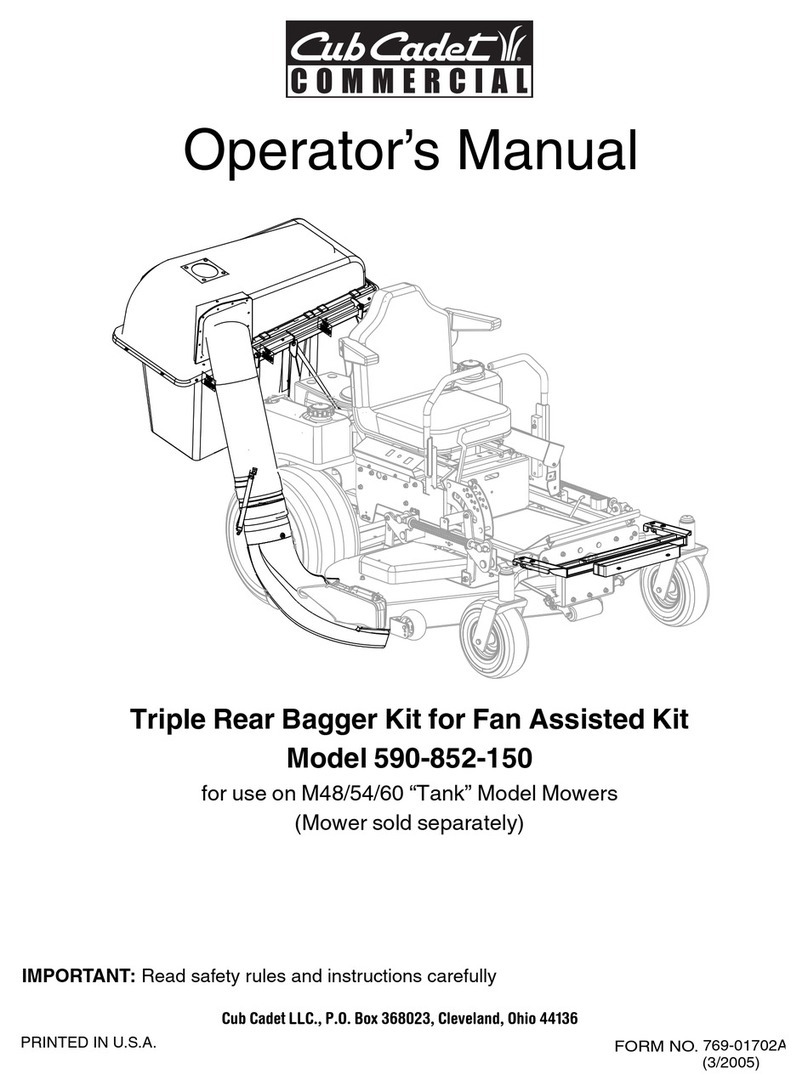
Cub Cadet Commercial
Cub Cadet Commercial 590-852-150 Operator's manual
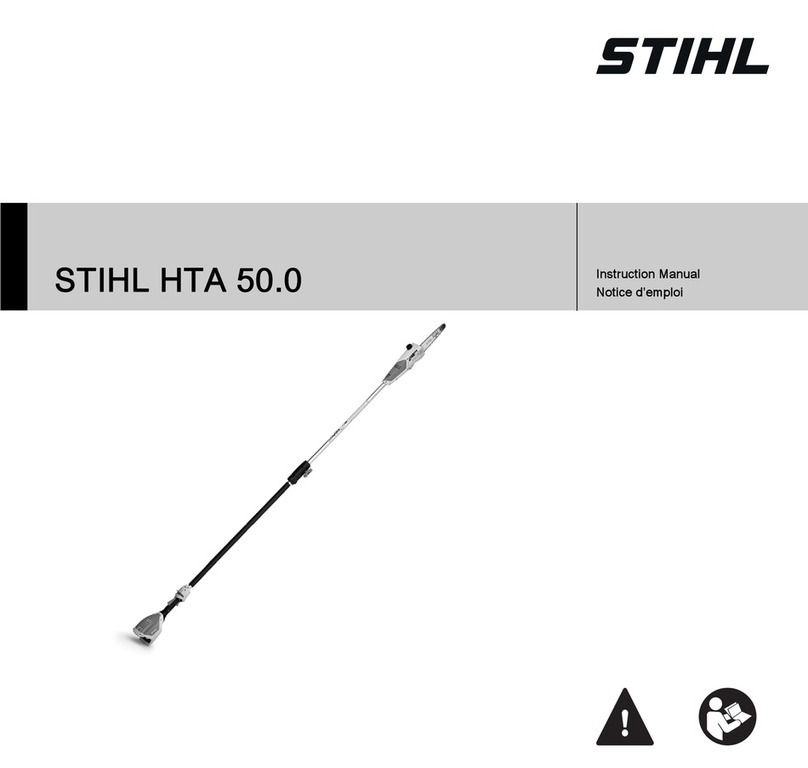
Stihl
Stihl HTA 50.0 instruction manual
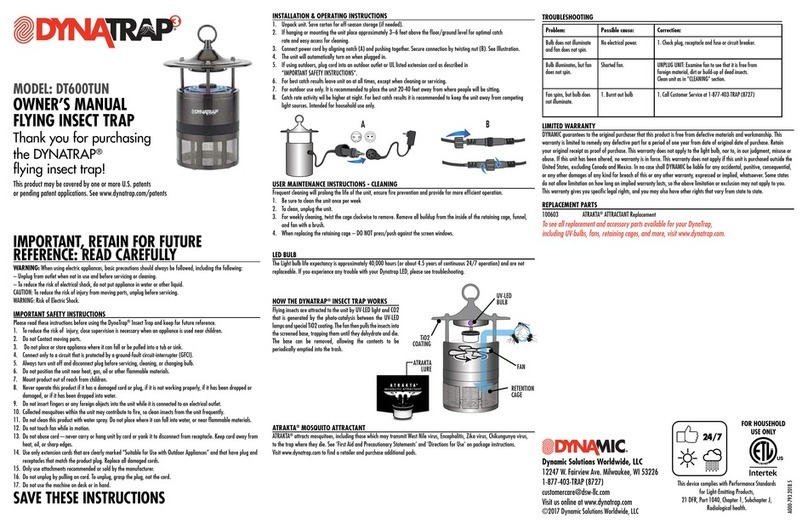
DynaTrap
DynaTrap DT600TUN owner's manual
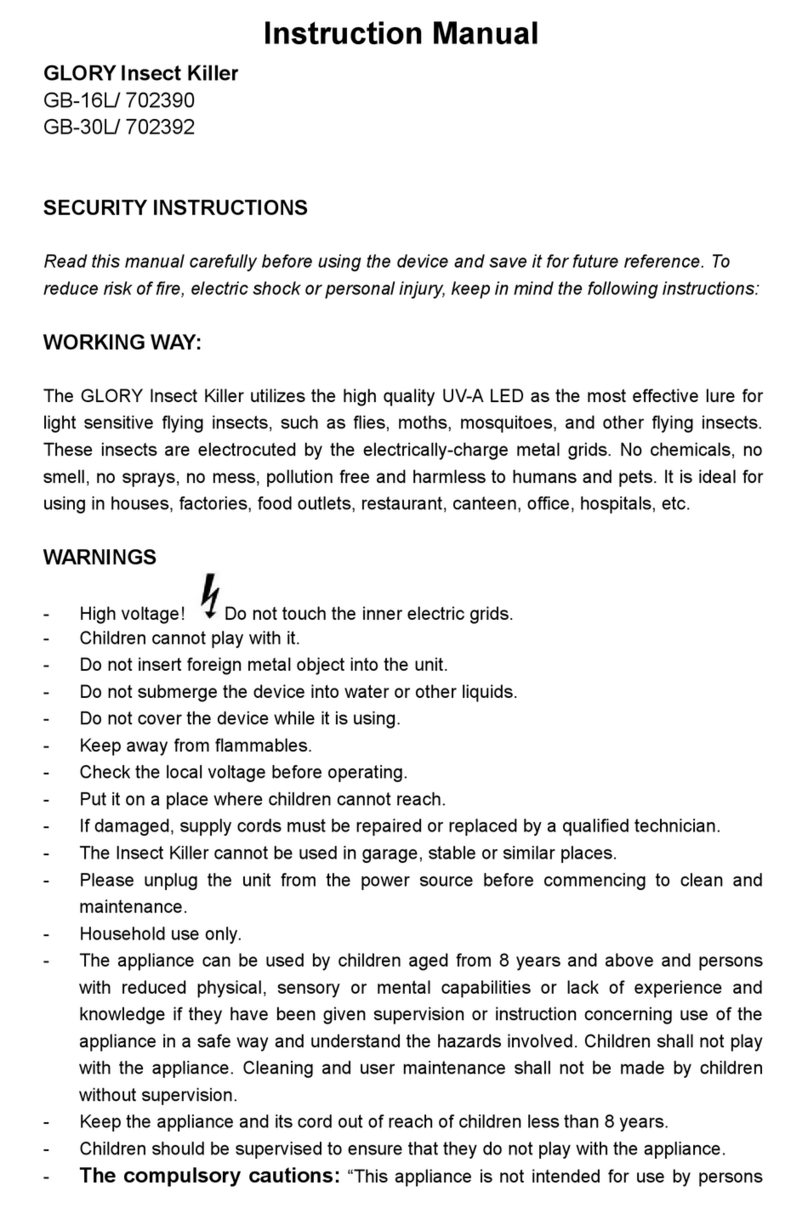
Glory
Glory GB-16L instruction manual
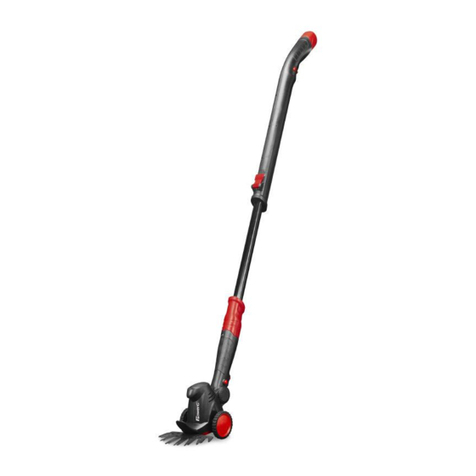
PowerG
PowerG N0E-10ET-10.8 Translation of the original instructions
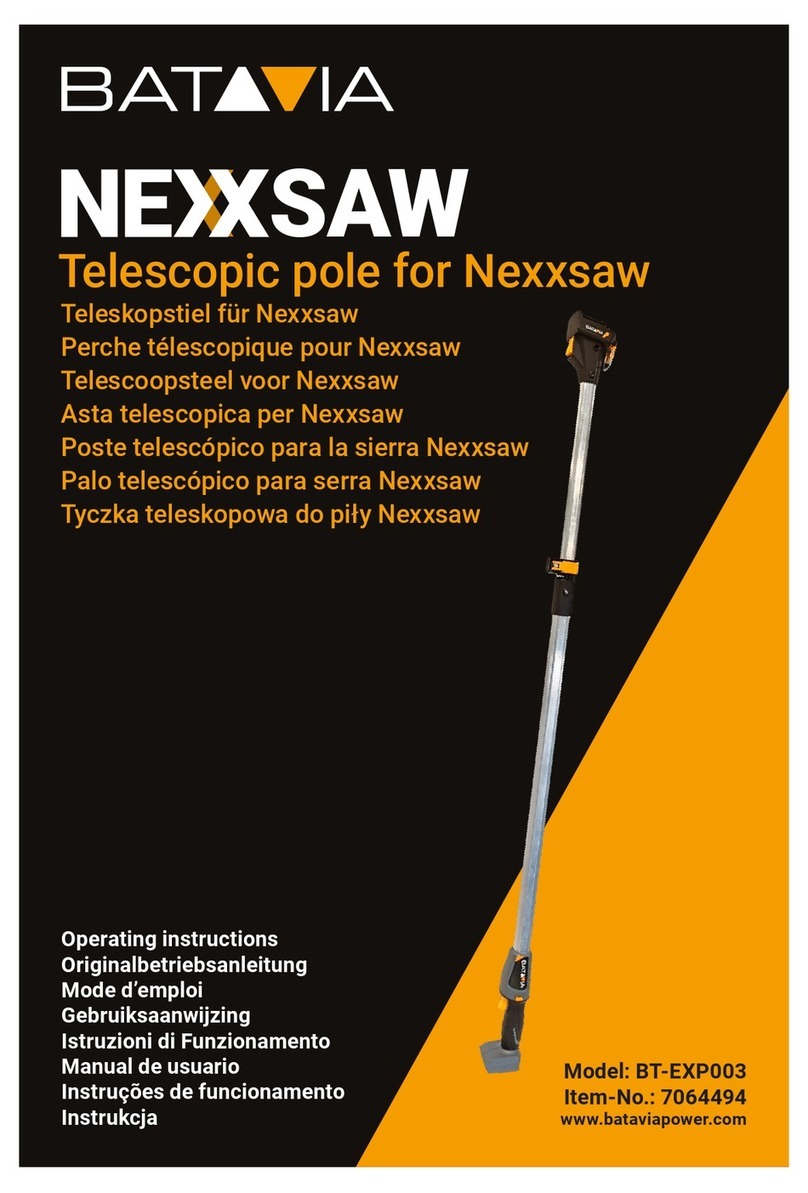
Batavia
Batavia NEXXSAW BT-EXP003 operating instructions
